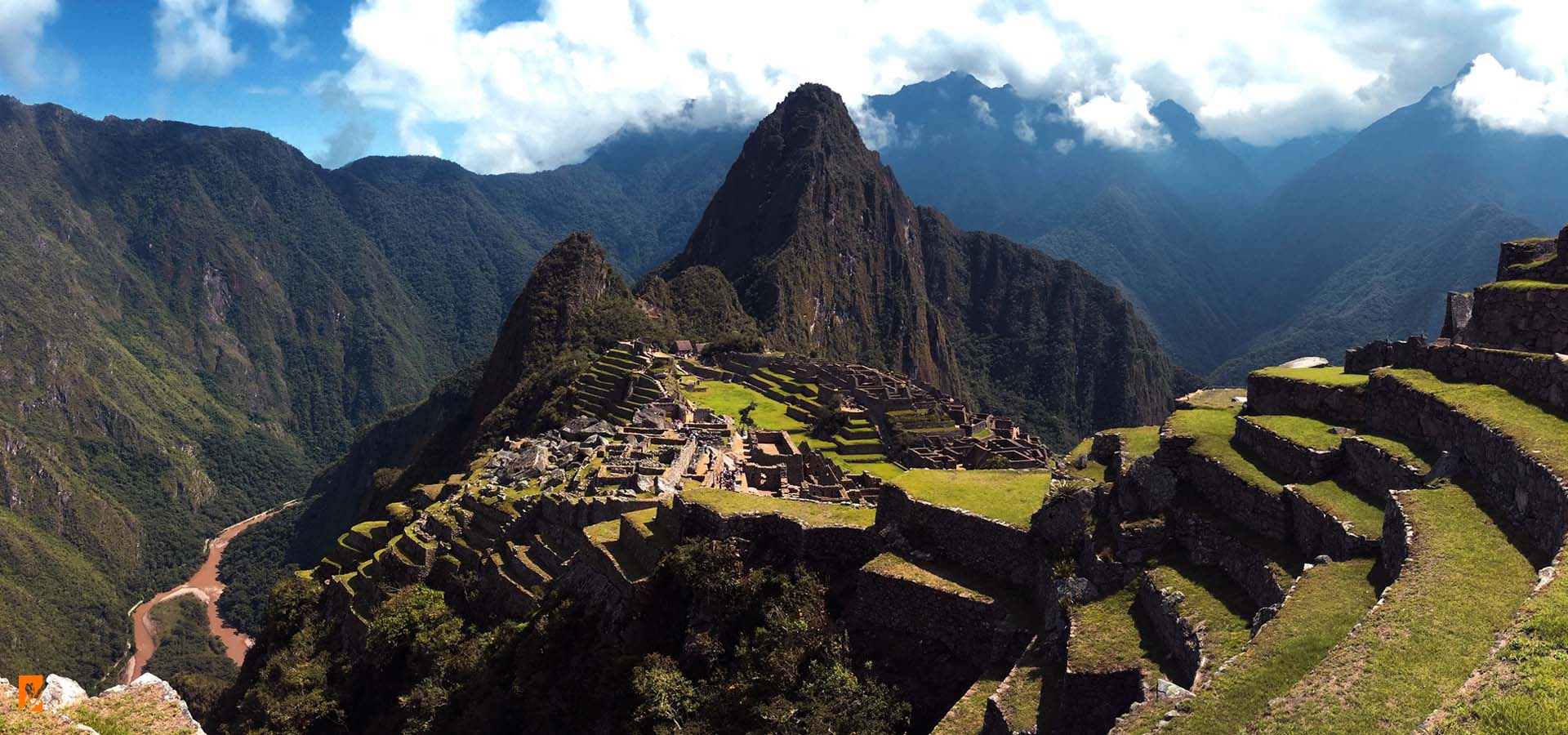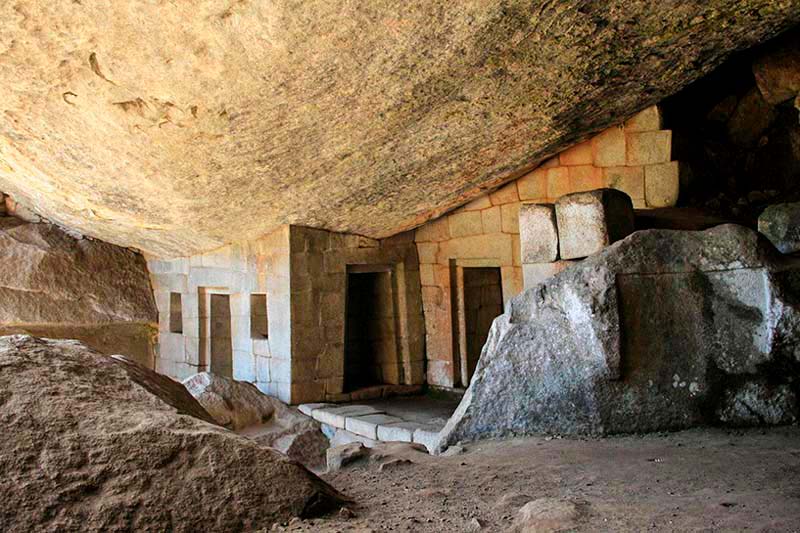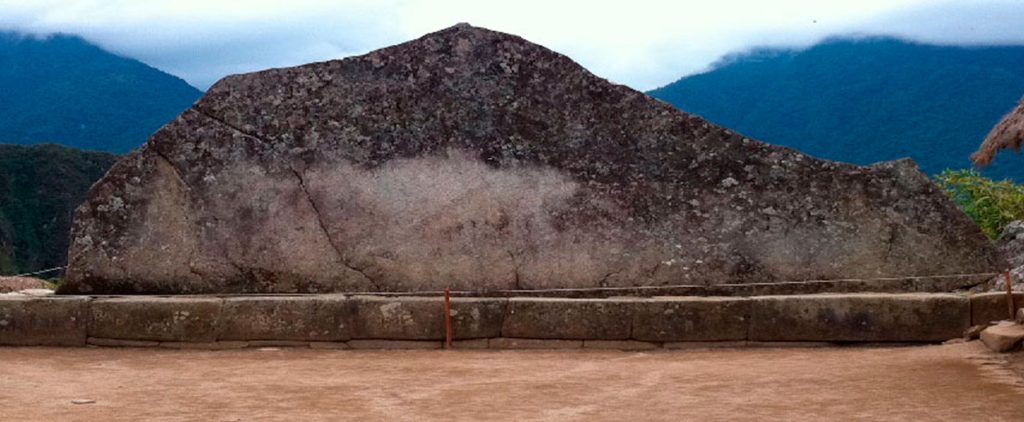Written by Sam Corporations November 29, 2022

Magnificent scenery and perfect stonework are all a part of the Lost City of the Incas and have fascinated historians, architects and tourists since the ruins were uncovered from the jungle over a century ago. To make the most of this unforgettable place, use our guide to Machu Picchu to help plan your trip.
Machu Picchu is perhaps the most sought-after destination in South America and an unforgettable experience. Part of the wonder of the site is the mystery and magical energy that surrounds it. The ruins were first discovered in 1911 by Hiram Bingham, a young Yale archaeologist who was looking for another fictional city.
Historians can only speculate on the site’s original use, but most agree it was probably constructed around the time of Inca ruler Pachacútec in the mid-15th century. Its lack of military significance is probably why it was left untouched by the Spanish conquistadors and lay undiscovered for centuries.
Many photographers say that it’s impossible to take a bad photo of Machu Picchu, as the magnificent panorama of the Inca buildings and horn-shaped forested peak of Huayna Picchu look great from any angle. All the more reason to avoid a rushed day trip from Cusco. Make the most of your time in the one of the Seven Wonders of the World, Machu Picchu!
All international flights to Peru will first land in Lima. From Lima you need to make your way to Cusco, the city of Cusco is the only way to access Machu Picchu. You can either fly directly to Cusco (1.5hr) or travel via road. (20hrs).
While we are sure you are just excited to get to Machu, there are many great spots and activities worth exploring between the two cities. If you book with Sam Corporations, make stops along the way, explore unique parts of the country before visiting the Inca citadel of Machu Picchu. Another advantage to taking the scenic route, is that you give your body the opportunity to slowly adjust and acclimate to the altitude. Cusco city is at an overwhelming 3,400m/11,152ft above sea level and you are likely to suffer from altitude sickness if you increase elevation levels too rapidly. So, it’s always a good idea to allow for a gradual increase in altitude. Machu Picchu is at a lower elevation, at 2,430m/7,972ft. If you spend some time in Cusco, you lessen the chances of suffering from altitude sickness.
There are a number of ways to visit this 7th Wonder of the World from Cusco. You can book any multi-day alternative trek to Machu Picchu, like the Lares or Salkantay Trek. These treks are great if you want to experience, authentic Andean culture, visit secluded indigenous villages and experience stunning landscapes with breathtaking glacial lakes and snow-capped mountain peaks.
The most popular option is doing the Classic Inca Trail. This is the trail that was used by the Ancient Incas more than 600 years ago. Travel back in time as you walk in the footsteps of the Incas, explore many archeological sites along the trail and get a unique vantage point of the Citadel from the famous Sun Gate. This vantage point is only possible if you do the Inca trail. For those who are not fans of camping or multi-day treks, you can simply book a 1-day tour. Which takes you to the neighboring town of Aguas Calientes by train, followed by a short bus ride up to the Machu Picchu gates.
We suggest you schedule your visit to Machu Picchu from April through May or from September through October. The busiest time to visit Machu Picchu is from late June to the end of August. This is the driest, sunniest period coinciding with the busy school holidays. The rainy season from January to March but the region can be rainy and misty at any time with Feburary being the wettest.
The best times to visit are usually late April to mid-June, and September-October, just outside the rainy season but avoiding the summer rush. The subtropical climate at 2,400m/7,874ft is generally comfortable though.
There is a certain amount of luck regarding how long you wait in line to enter the site. It’s often very busy at 6am when visitors rush to enter the site for sunrise, then slows down an hour or 2 later. Lines usually peak again at 11am to noon when the day trippers arrive from Cusco and quiets back down again by 2pm.
Most importantly: You need to purchase your tickets in advance. Don’t even consider trying to purchase tickets the day of your visit to Machu Picchu at the gate. Most travel agencies typically recommend that you plan your trip at least six months in advance. The Classic Inca Trail hike that concludes at Machu Picchu fills up almost a year out during high season. It may be possible to get your ticket weeks or even days ahead of time during low season. To avoid disappointment and to ensure you enter the site on your desired day, it’s best to plan as far ahead as possible. If you want to add any hikes with limited availability, such as Huayna Picchu or Machu Picchu Mountain, booking early is essential.
Firstly, to book your tickets you need to check availability. You can check on the government website www.machupicchu.gob.pe or at samtravelperu.com, whose calendar is directly linked to the government website, so all availability is in live time. Then you have to choose from the circuits (see below for more info). After, select your travel dates, enter your personal information and make payment. Once everything goes through, you will receive confirmation via email. It is important to be aware that most foreign cards do not work on the government website. Never assume availability, a large number of tickets can sell out in a matter of minutes. The Peruvian government had put a lot of regulations to ensure the preservation of this archeological site, including the amount of people that can visit on a given day. The current daily capacity stands at 3,234 for the Citadel alone, 800 for Machu Picchu Mountain, and 400 for narrower Huayna Picchu mountain. The Classic Inca Trail only releases 500 permits per day, these permits also include assisting personal guides and porters, which makes only around 200 permits available to tourists per day. Machu Picchu tickets are available all year round, however the Inca Trail is closed in February for maintenance.
If you do not want to navigate through this complicated system, then contact us, SAM CORPORATIONS, with your requirements and we will deal with all the details and create a plan that works for you! We will simply send you confirmation once everything is booked and confirmed.
If you are planning to visit in the morning, then circuit#1 will be perfect and if you are planning to visit in the afternoon, then circuit#2 is the better option.
With this ticket you can tour and explore ONLY Machu Picchu Inca city.
| 1st. Schedule: | Entrance to Machu Picchu from 6 am | Entrance to Machu Picchu from 7 am | Entrance to Machu Picchu from 8 am |
| 2nd. Schedule: | Entrance to Machu Picchu from 9 am | Entrance to Machu Picchu from 10 am | Entrance to Machu Picchu from 11 am |
| 3rd. Schedule: | Entrance to Machu Picchu from 12 pm | Entrance to Machu Picchu from 1 pm | Entrance to Machu Picchu from 2 pm |
The visitor can stay in Machu Picchu up to 4 hours after admission.
For the first schedules, you need to book way in advance, at least 2 or 3 months.
You are NOT allowed exit and re-enter during your visit (use restrooms before entering site)
**** The hike up to the Sun Gate & Inka Bridge are no longer permitted, click the link for more information.
With this ticket you can enter the Inca City of Machu Picchu and also ascend to the Huayna Picchu mountain.
| Group 1 | Entrance to MachuPicchu from 6 am Entrance to Huayna Picchu between 7 am – 8 am |
| Group 2 | Entrance to MachuPicchu from 7 am Entrance to Huayna Picchu between 8 am – 9 am |
| Group 3 | Entrance to Machu Picchu from 8 am Entrance to Huayna Picchu between 9 am – 10 am |
| Group 4 | Entrance to Machu Picchu from 9 am Entrance to Huayna Picchu between 10 am– 11 am |
*** You will follow the circuit #4 when doing Huayna Picchu mt.
With this entrance you can enter the Inca City and also ascend to the Machu Picchu Mountain.
| 1st. Group | Entrance to Machu Picchu from 6 am Entrance to the Mountain between 7 am – 8 am |
| 2nd. Group | Entrance to Machu Picchu from 7 am Entrance to the Moauntain between 8 am – 9 am |
*** You will follow the circuit #4 or circuit #3 when doing Machu Picchu mt.
You are not allowed to enter Machu Picchu without a licensed guide — the staff are trained to vet all people entering into this sight. Many licensed guides walk around offering their services near the entrance gate, so you can hire one on the spot. We cannot the guarantee the type of service you will receive. We suggest you select a reputable company that will provide a bilingual guide that is knowledgeable about Inca Culture and history and is also up to date on all the new accepted theories about Machu Picchu.
Once inside the citadel, you have the option to climb either Huayna Picchu (the famous peak seen in pictures of the citadel) or Machu Picchu Mountain. Tickets for these additional treks need to be booked separately and in advance. We recommend checking with the tour operator you use for your main trek.
It is an imposing site at 10 meters long and 4 meters wide. Its construction is immaculate, proving the value and importance placed on it by the Incas. It’s located at the Sacred Plaza in the Main Urban Section of Machu Picchu. It once had five windows, but now only three of them remain. Each window is said to represent something: The first one represents the Underground (Uku-Pacha), the second is the Heavens (Hanan-Pacha) and the final one is The Present (Kay- Pacha).


The peak of Huayna Picchu rises over Machu Picchu, where the Urubamba River gently coils around it. It is at an elevation of 2,693m/8,835ft. The mountain is home to the breathtaking Temple of the Moon and adjacent to it is the Great Cavern made of fine masonry. The high priest and local virgins resided here. Its visitors are limited to 400 a day, during the only 2 time slots available each day. The hike is steep, on the pathway leading to the summit. It can get slippery, there are certain sections do offer steel cables for support. The view at the top gives you the most panoramic views of Machu Picchu. Majority of the stunning pictures you find on postcards are taken at the top of Huayna Picchu.
The Sun Gate (2,720m/8,924ft), also known as Intu Punku, is perched on the hilltop overlooking the Great Citadel of Machu Picchu. It is the first viewpoint of Machu Picchu and only people hiking the Inca Trail are privileged enough to the stunning views this vantage point provides. The Incas used it as a kind of control gate for the people entering and leaving the Inca City of Machu Picchu. Due to its remote and strategic location, it is believed that Machu Picchu only welcomed elite guests from the empire. It is a large place, with windows and doors supported by terraces. From the Sun Gate you can see the entire City of Incas and the size of the site will simply amaze you.


Intuhuatana is a large imposing stone carved directly into the bedrock of the mountain´s summit where Machu Picchu lies. The Incas believed the stone held the sun in its place along its annual path in the sky. The Spanish destroyed other Intuhuatana because they feared it would create a political liability due to its religious significance. Even as it stands today, it still feels like the stone radiates energy.
The temple of the sun is located in the religious sector in the Citadel of Machu Picchu. It is made of granite, inside is a natural cave that could have been a grave or mausoleum. It is possibile that Pachacutec was buried here, him being the most important Inca Emperor and he also ordered the construction of Machu Picchu. Its shape is circular, which is very unusual in Inca Construction. The Temple played a vital role in religious practices. It was an astronomical observatory used to determine the arrival of the summer and winter solstice, as well as the change of seasons. In the center is an altar carved in rock for religious ceremonies. This sacred Temple of the Inca, is a holy place that radiates spiritual and divine energy.


Temple of the Moon can be found at 390m/1,280ft below the summit of Huayna Picchu. It is made of masonry stone, has an open face and a small cave opening. In the center is a throne carved out of rock, next to it are steps that descend deep into the cave.
This stone is said to hold mummies. The stone work depicts the 3 plains of Inca religion. Firstly, we find The Hunan Pacha (the heavens) represented by the great Condor, followed by The Kay Pacha (the earth or physical life) represented by the formidable Puma Cat and finally we get The Ukju Pacha (the underground) seen in a form of a snake. There are many theories regarding its use. Some say it was used for the worship of Gods. While others conclude that it was a royal tomb, place of worship, and a look-out post. Another interesting theory is that it was sacrificial ground, because the Inca would often make sacrifices to their Gods, or it could also have been a ceremonial bathing complex. Whatever it was used for, it played a very important part in the life of the ancient Incas.
The trail from the summit of Huayna Picchu to the Temple is very hazardous and not suitable for people with vertigo or acrophobia.
The Inka Bridge is located on the western part of Machu Picchu. The hike takes about 30 minutes one way. It sits at an elevation of 2,450m/8,038ft and is an easy hike. The bridge is made of wooden logs balanced by two stone walls. The path is made of stone, however at this particular point the Incas left a 20-foot gap, presumably to keep outsiders and enemies out. The foot drop is a staggering 1,900 feet. This was a secret entrance for the Inca Army into Machu Picchu, so the need to keep other people out makes sense.
The Incas were known for constructing many different bridges, this one in particular is a common bridge found in the Andes Mountains, the log and stick bridge. As time has progressed the Inca bridge has deteriorated and for safety reasons, hikers are no longer permitted to cross the bridge.


As the name states, it was an outpost building used by the guards to watch the two main entrances into Machu Picchu, also referred to as the Caretakers Hut. The two entrances include the Sun Gate in the South and end of the Vilcabamba Trail in the west. Modern “House of the Guardians” gives you an impressive view of the entire citadel and will be the perfect opportunity to take those perfect pictures of the Great Machu Picchu. After hiking the Inca Trail, you will find the grounds around the building a great place to stretch your legs, enjoy the llamas and alpacas peacefully grazing and just relax a bit before exploring the Majestic Machu Picchu.
The most fascinating thing about Ancient Incan culture is their belief in the sacred relationship between men and nature. They made sacrifices, like throwing coca leaves on the ground in order to communicate with the Gods of the Mountains (Upus) among others. The sacred rock is a large rock, that stands at 3 meters high and 7 meters wide.
Although opinions differ on its shape, everyone seems to agree that there are similarities between its shape and the mountain peak behind it in the distance. Its location in the ceremonial space, exactly on the northern part of the city and at the center of the two Huayranas, supports the idea this stone was used for worship. People that have touched the stone when it was still allowed, state that they felt the energy and spirit of Upus radiating from the rock. It is a very popular structure and is positioned near the entrance to Huayna Picchu.
We hope this guide gives you a new appreciation as to what this Seventh Wonder of the World has to offer! As a reminder, SamCorporations is here to help and would love a call from you! Do not hesitate to reach out to us with any questions or to schedule an adventure to this majestic citadel!

Quality
Contact our travel advisors to plan the most complete trip of your life.
Simplified ease of communication, text us on WhatsApp, email or call us.
Our guides are local and have vast knowledge in Peruvian culture and history.
100% local company. Development and environmental sustainability
Our groups never exceed 10 people, giving you an unforgettable experience
Discover an exceptional journey where perfection meets adventure.